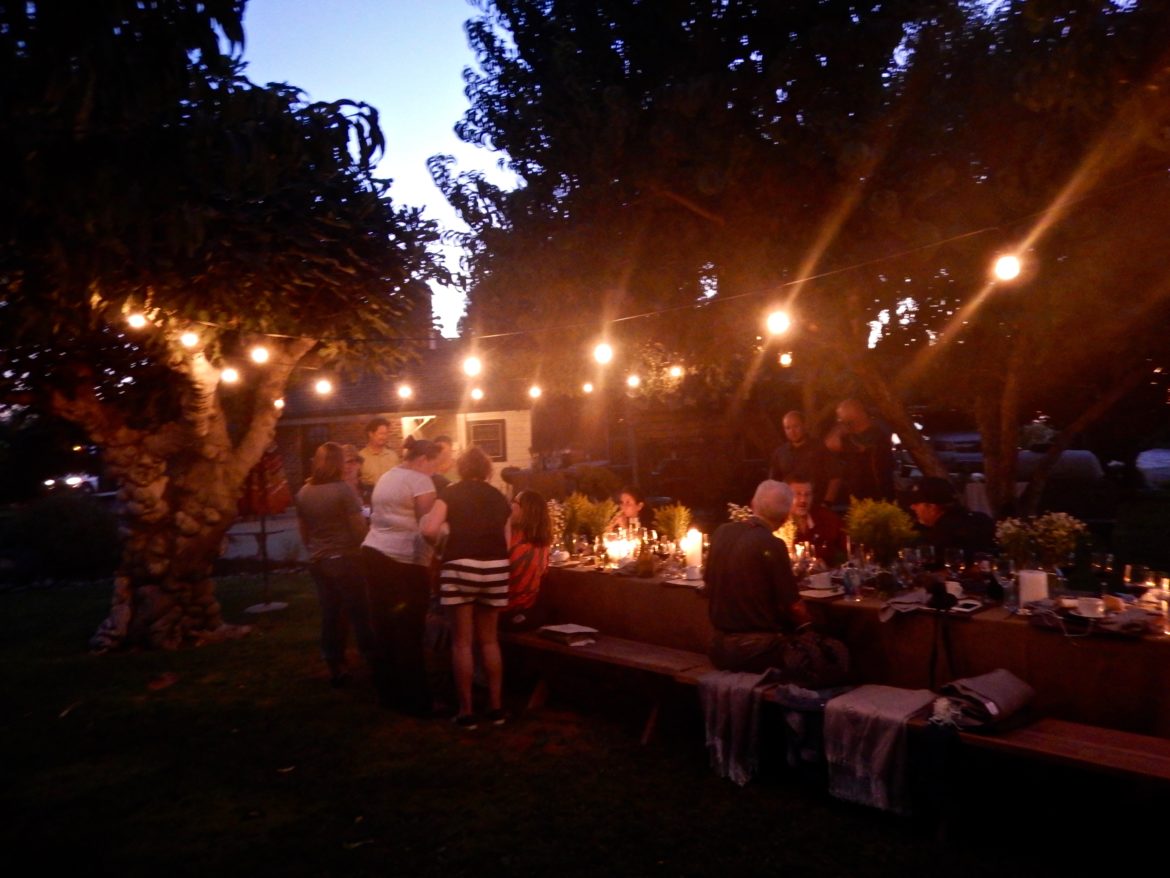
Now, there are ways to judge balance that do not involve acidity but I think it's too easy for us (and I count myself in this number) to adopt a one-size-fits-all approach when it comes to assessing balance in wines. Not least if, like me, you actually quite like Grenache Blanc and Viognier au naturel. As we should all know, these are varieties that have quite low acid naturally (Grenache and Grenache Blanc, and numerous others can suffer from this too) and yet, in the pursuit of balance, winemakers the world over (and this is not isolated) will attempt to rectify the inherent qualities of the grapes and wines they work with.


I was at a winemakers' dinner recently and a local winemaker I really admire was bemoaning the fact that many of our counterparts will too readily add acid to Viognier and Tempranillo. The second mindswirl was even more important and much more practical: our demand for balance (of the acidic kind or otherwise) will kill grapes. In any case, show me perfect balance and I'll show you commercial Pinot Grigio. I also suspect, especially with reference to Joanna Simon's Txacoli, that we're not really looking for perfect balance. The first thing in my head was what a lecturer of mine in the Sorbonne once said 17 years ago: "Perfection is boring." Our quest for perfect balance in wine is, I hope, something we will not find – like a symmetrical face. And why is there an issue around high alcohol in warm climates – surely that's as much a function of its place (terroir) as anything else? Why seek to spurn it?īefore I dig myself a gargantuan hole though, let me give you the context to my thoughts on balance before I found myself reading Joanna Simon's piece. Whether we can drink it now or in 20 years' time should only really be a function of balance itself, not necessarily a gauge of quality. In which case, surely an element of snobbery is coming into the equation? After all, drinking wine is what we all want to do with it. Unless, of course, you really want to age it. The fact that a Californian Cabernet Sauvignon gets enough (dare I say too much?) sunlight that it does not need to have its acidity and tannin toned down by blending, and is ready to drink, should not be problematic. Rioja is the perfect example of combining both blending and aging (in this case, before release) to achieve almost immediate balance. turn it into capital) and 2: flavor development (which includes a balancing of the wine). I know that, in some cases, aging confers further layers of interest to a wine but I think we mustn't be blind to the notion that aging is a two-headed turtle – 1: snobbery/class (I can afford not to drink my purchase – i.e. Just as the Old World method of blending varieties to iron out spikes in the wine (how Bordeaux or Rioja is "balanced") is well understood so, I think, is aging itself a form of making the wine balanced (Barolo would be the example par excellence, but young Bordeaux is similarly approached). And yet this is formally accepted, the way the palate is tricked into accepting the sugar in Coca-Cola by its outrageously low pH.ĭon't get me wrong here – I love wines on the high-acid spectrum – I will choose an old-world Sauvignon Blanc over a Californian Merlot most days of the week, but I have to recognize that my preference is for an equally imbalanced wine.įurthermore, the argument that a lack of acidity will be detrimental to aging does, I think, put the chicken before the egg. High acidity is fine (it's integral to the likes of Hondarribi Zuri, Riesling, Sauvignon Blanc and Cabernet Sauvignon – this is part of their makeup), but for many of these grapes, their resulting wine is out of balance the acidity is, with a degree of objectivity, too high. Why is one spike praised and the other questioned?įirstly, I think, it's because when a lot of people talk about balance, nine times out of 10, they actually mean acidity. But why is high alcohol in California worthy of complaint and Txacoli's out-of-balance acidity (what she starts with) worthy of Simon's effusions? Indeed, Simon sets up the link almost straightaway: "From one extreme to another". Related stories:Ĭalifornia Chardonnay: From Butterball to Balanceįine.

She also points out that (as is now generally accepted) high alcohol levels in wine can be fine if they are "balanced" with sufficient or complementary levels of fruit, acid and tannin. She points out that many of our wine writers have been crusading against high-alcohol wines for the last 20-odd years. Simon's blog reflects on the nature of high-alcohol wines and balance. I've been wrestling with the issue of balance in wine for the last couple of weeks and all it took was a Joanna Simon piece on the Wine Gang's blog to give me direction. © | Some wines are naturally "unbalanced".


 0 kommentar(er)
0 kommentar(er)
